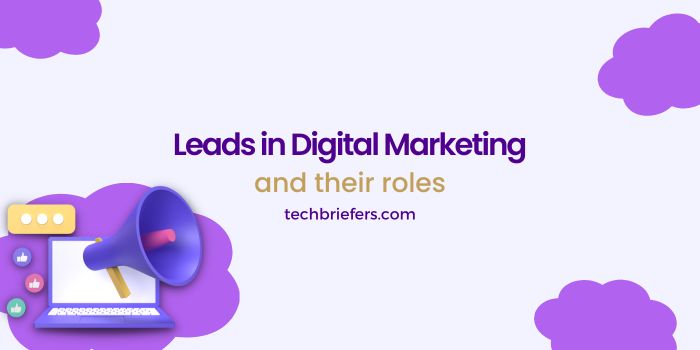Understanding Leads in Digital Marketing and Their Role

Leads are a term frequently used in digital marketing. Besides being important, this term plays a vital role for companies and businesses. However, many people may not fully understand what leads are. In this article, we’ll clearly explain what leads mean, their types, how to obtain them, and their overall role and benefits in digital marketing.
What Are Leads in Digital Marketing?
Leads refer to individuals or potential customers who have shown interest in a product or service offered by a company. In digital marketing, leads are people or organizations who have provided their contact information and expressed initial interest in a business offering.
Leads are essential in the marketing and sales funnel. These are not just random visitors—they are individuals with real potential to become paying customers. However, not all leads are equal. Some might only be curious with no serious intention to buy, while others may be ready to make a purchase decision.
A qualified lead typically exhibits clear signs: they’ve shown interest in the product, are willing to share personal information such as an email address or phone number, and may have engaged with the company’s content or tools. However, they may not be ready to buy immediately.
Also Read: Top 5 Effective Email Marketing Tips
In digital marketing, leads are categorized based on their readiness to take action. Understanding these types helps businesses plan the right strategies. Let’s explore the main categories of leads.
1. Service Qualified Lead (SQL)
A Service Qualified Lead is someone who already uses your service and has shown interest in upgrading or purchasing additional services. They may have contacted customer service to inquire about more advanced features or a better plan.
Key signs of a Service Qualified Lead (Leads in Digital Marketing) include:
- Requesting an upgrade
- Consistently using advanced features
- Asking for better solutions
- Hitting the usage limit of their current plan
This lead type is great for upselling and cross-selling.
2. Product Qualified Lead (PQL)
A Product Qualified Lead is someone who has used a free or trial version of your product and is interested in moving to a paid version. They already know the value of your product.
Key characteristics of a PQL:
- Actively using the free version
- Providing positive feedback
- Asking about premium features
- Showing consistent product engagement
PQLs are often one step away from becoming paying customers.
3. Sales Qualified Lead (SQL) – Leads in Digital Marketing
Sales Qualified Leads are highly interested potential buyers. They have shown strong intent and are ready to speak with a sales rep.
Common traits of a Sales Qualified Lead:
- Requesting product demos
- Asking purchase-related questions
- Providing detailed info in forms
- Interacting directly with your sales team
These leads are close to making a purchase decision.
4. Marketing Qualified Lead (MQL)
Marketing Qualified Leads have engaged with your marketing efforts but are not ready for sales interaction yet.
How to identify an MQL:
- Filled out contact forms
- Repeatedly visited product pages
- Downloaded brochures or eBooks
- Subscribed to newsletters or attended webinars
MQLs are at the top of the funnel, requiring nurturing.
Also Read: Benefits of Using Go-To-Marketing Strategy
The Role of Leads in Digital Marketing
Leads play a powerful role in the digital marketing ecosystem. Companies must understand their behavior and intent to convert them into customers effectively.
1. Grow Customer Base
Leads help increase your number of customers. If nurtured properly, many can turn into long-term buyers.
2. Boost Sales with Leads in Digital Marketing
Qualified leads have a higher chance of buying, which leads to higher product or service sales and increased revenue.
3. Expand Marketing Reach
Leads may share your content across platforms, helping you reach new audiences organically.
4. Understand Market Needs
Leads provide insight into current consumer needs and behavior, helping you tailor your offerings and improve marketing campaigns.
Also Read: Top 5 Digital Transformation Success Factors
Marketing Strategies to Attract and Convert Leads in Digital Marketing
To attract and convert qualified leads, businesses should use the following techniques:
1. Create High-Value Content
Share blogs, videos, and guides that answer your audience’s questions. This builds authority and trust.
2. Use SEO Best Practices
Optimize content with the right keywords, metadata, and internal links to improve visibility in search engines.
3. Build Effective Landing Pages
A well-designed landing page with a clear CTA (call-to-action) and easy-to-fill forms can improve conversion rates.
4. Email Marketing
Send personalized content through newsletters to nurture leads over time. Provide value before making sales pitches.
5. Social Media Engagement
Be active on platforms like Instagram, LinkedIn, and Facebook. Respond to comments, run ads, and share useful posts to attract and retain leads.
Closing Thoughts
In digital marketing, leads are not just names on a list—they are the foundation of your sales success. From increasing customer numbers to improving revenue and reaching a larger audience, leads play a strategic role in your business growth. Companies that understand, qualify, and nurture their leads effectively are always one step ahead in the digital game.

Leave a Reply